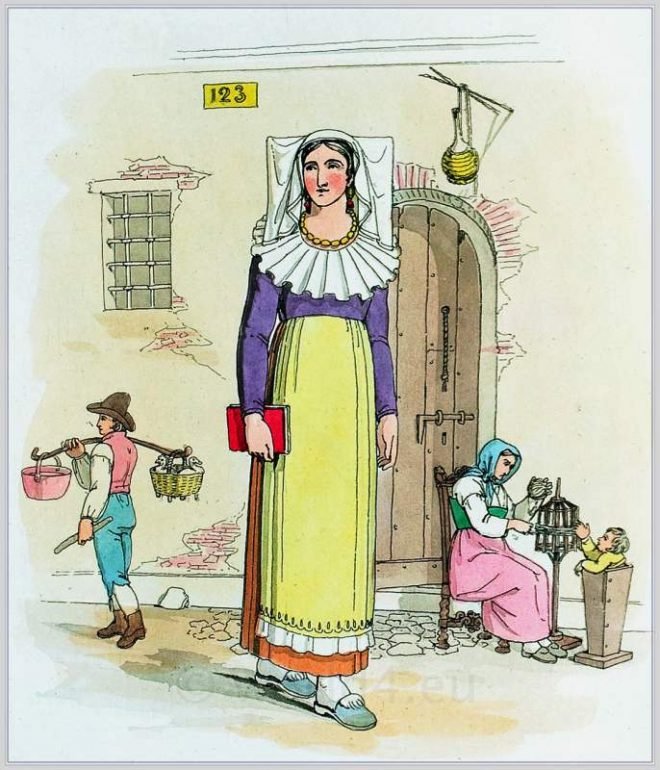Various Rococo headdresses and hairstyles; from the books of the time.
Category: Europe
Fashions in Europe. European Costume and Cultural History.
German Belle Époque hairstyles in 1906.
Art nouveau Hairstyles. Berlin May 1906. German General hairdresser newspaper.
French baroque and rococo wigs. Diderot`s Encyclopaedia
Wigs of men and woman. Baroque, rococo. 18th century. Diderot`s Encyclopaedia
Scottish clan Mac Dhubhich, or Mac Duffs.
MAC DHUBHICH, OR MAC DUFFS. THIS surname is one of the most ancient in Scotland, and the chief was among the first of those nobles who became distinguished by the Saxon title of Earl.
Limonadiere before triumphal arch of the Place du Carrousel. Paris, 1821.
No vender of any article in the world makes a greater display than the Limonadiere of Paris.
Flower girl of Paris with huge wooden shoes, 1821.
This way of carrying loads is common in France. A wooden frame is secured to the shoulders, and rests upon the whole surface of the back to the hips.
Coshois at Dieppe, Seine-Maritime. Sketches Illustrative 1821.
THE entry into France by Dieppe is particularly striking, it resembles very much an old English town.
French pilot in large petticoats, boots, gay colored caps and earrings.
The packets from Brighton to Dieppe, when in sight of the harbour, are taken possession of by French pilots
A Pilgrim going to Loretto. Shrine of the Holy House.
The shrines of Loreto and St. James of Gallicia cannot, like that of St. Thomas of Becket at Canterbury in former times, show the stones worn away by the devout kisses of the modern far-wandering penitent.
A female of Vercelli with peculiar head-dress. Italy Piedmont 1821.
A female of Vercelli, Piedmontese. This one of the most peculiar head-dresses belonging to the lower orders in Italy.










